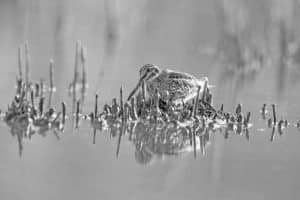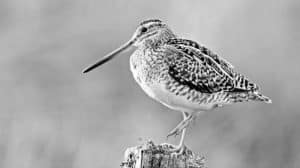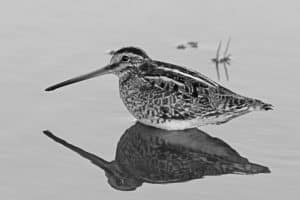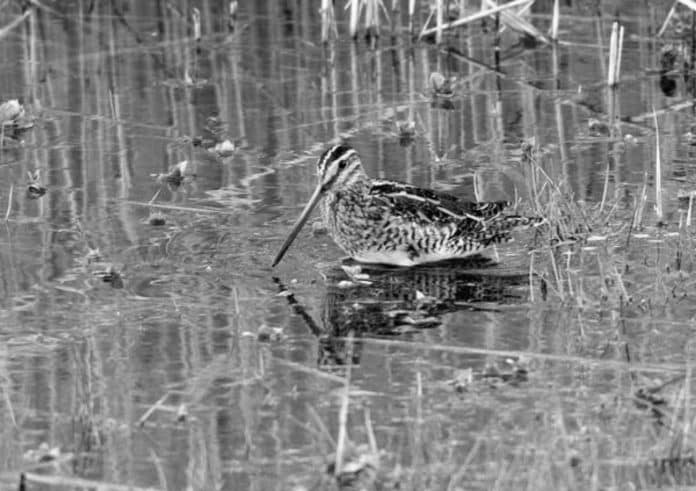Introduction to the Jack Snipe
Welcome to Tanzania, a land of breathtaking landscapes and diverse wildlife. Among the many unique bird species that call this country home, the Jack Snipe in Tanzania stands out as one of the most elusive and fascinating. In this article, we will delve into the world of the Jack Snipe and explore the challenges and rewards of tracking and observing this elusive bird in Tanzania.
The Jack Snipe (Lymnocryptes minimus) is a small wader bird that belongs to the family of sandpipers. It is known for its cryptic plumage and secretive behavior, making it a true challenge to spot in the wild. With its mottled brown and buff-colored feathers, the Jack Snipe is perfectly camouflaged in its preferred habitats, which include wetlands, marshes, and bogs.
Habitat and distribution of the Jack Snipe
The Jack Snipe is a migratory bird that breeds in the northern parts of Europe and Asia, including countries such as Russia, Sweden, and Finland. During the winter months, it travels south to find more favorable conditions, including Tanzania. In Tanzania, the Jack Snipe can be found in various wetland areas, such as the Serengeti National Park, Lake Manyara, and the Ngorongoro Crater.
These wetlands provide the perfect habitat for the Jack Snipe, as they are rich in vegetation, insects, and small invertebrates that make up the bird’s diet. The Jack Snipe is particularly fond of muddy areas with tall grasses, where it can hide and forage for food. These wetlands also offer protection from predators, allowing the Jack Snipe to thrive in relative safety.
The challenges of finding the Jack Snipe in Tanzania

Spotting the Jack Snipe in Tanzania is no easy task. Its small size and excellent camouflage make it virtually invisible among the marshes and wetlands it calls home. In addition, the Jack Snipe is incredibly elusive and prefers to remain hidden, making it a true challenge for birdwatchers and wildlife enthusiasts.
To increase your chances of finding the Jack Snipe, it is essential to have a keen eye and a patient demeanor. Look for areas with dense vegetation and muddy patches, as these are the preferred habitats of the Jack Snipe. Be prepared to spend long hours quietly observing these areas, as the bird may only reveal itself for brief moments before disappearing once again.
Best time and places to spot the Jack Snipe
If you’re determined to spot the Jack Snipe in Tanzania, timing is crucial. The best time to see this elusive bird is during the dry season, which typically runs from June to October. During this period, the wetlands and marshes are less flooded, making it easier to navigate and spot the Jack Snipe.
When it comes to specific locations, the Serengeti National Park is a prime spot for Jack Snipe sightings. The park’s vast wetland areas are teeming with birdlife, including the elusive Jack Snipe. Lake Manyara and the Ngorongoro Crater are also worth exploring, as they offer similar wetland habitats that attract a variety of bird species.
Tips for tracking and observing the Jack Snipe
To increase your chances of tracking and observing the Jack Snipe, here are a few helpful tips:
- Be patient: The Jack Snipe is a master of hiding, so be prepared to spend long hours quietly waiting for it to reveal itself.
- Use binoculars: A good pair of binoculars will help you spot the Jack Snipe from a distance without disturbing its habitat.
- Learn their call: The Jack Snipe has a distinctive call that can help guide you to its location. Familiarize yourself with its unique vocalizations before your trip.
- Join a guided tour: Consider joining a guided birdwatching tour in Tanzania. Local guides are experienced in locating and identifying bird species, including the elusive Jack Snipe.
Other wildlife encounters in Tanzania

While searching for the Jack Snipe, you will have the opportunity to encounter a wide range of other fascinating wildlife in Tanzania. The country is renowned for its diverse ecosystems, which support an abundance of animal species. Look out for majestic elephants, graceful giraffes, and the iconic African lion as you explore the national parks and reserves.
In addition to mammals, Tanzania is also a haven for birdwatchers. Over 1,000 bird species have been recorded in the country, making it a paradise for avian enthusiasts. From colorful bee-eaters to soaring eagles, Tanzania offers a birding experience like no other.
Conservation efforts for the Jack Snipe
As with many species of birds, the Jack Snipe faces numerous threats to its survival. Loss of habitat due to human activities such as drainage of wetlands, pollution, and climate change are some of the major challenges the Jack Snipe and other wetland birds face.
However, there are ongoing conservation efforts in Tanzania and around the world to protect the Jack Snipe and its habitat. These efforts include the establishment of protected areas, wetland restoration projects, and educational programs aimed at raising awareness about the importance of wetland conservation.
Responsible wildlife tourism in Tanzania
When embarking on a wildlife adventure in Tanzania, it is crucial to prioritize responsible tourism practices. Respect the natural habitats and wildlife by following guidelines set by national park authorities. Avoid littering, stay on designated paths, and keep a safe distance from the animals.
By being a responsible tourist, you contribute to the conservation of the Jack Snipe and other wildlife species in Tanzania. Remember, your actions have an impact on the delicate ecosystems you visit, so always prioritize the well-being of the wildlife and their habitats.
The thrill of spotting the elusive Jack Snipe

After days of patient searching, the moment you finally spot the elusive Jack Snipe is an exhilarating experience. The bird’s intricate plumage and unique behavior make it a true gem for birdwatchers and wildlife enthusiasts. It is a testament to the wonders of nature and the thrill of discovery.
The Jack Snipe’s ability to blend into its surroundings and remain hidden is a reminder of the intricate web of life that exists in the wetlands of Tanzania. It serves as a symbol of the beauty and complexity of the natural world and the importance of protecting it for future generations.
Conclusion: A memorable wildlife adventure in Tanzania
Embarking on a wildlife adventure in Tanzania is a journey of discovery and awe. From the elusive Jack Snipe to the majestic elephants and vibrant birdlife, Tanzania offers a wealth of wildlife encounters that will leave you with unforgettable memories.
Remember to approach your wildlife adventures with respect and responsibility, ensuring the well-being of the animals and their habitats. By doing so, you contribute to the conservation efforts aimed at protecting the unique biodiversity of Tanzania.
So pack your binoculars, lace up your boots, and get ready to follow in the footsteps of the elusive Jack Snipe. Tanzania awaits, ready to reveal its hidden wonders and unforgettable wildlife experiences.

































